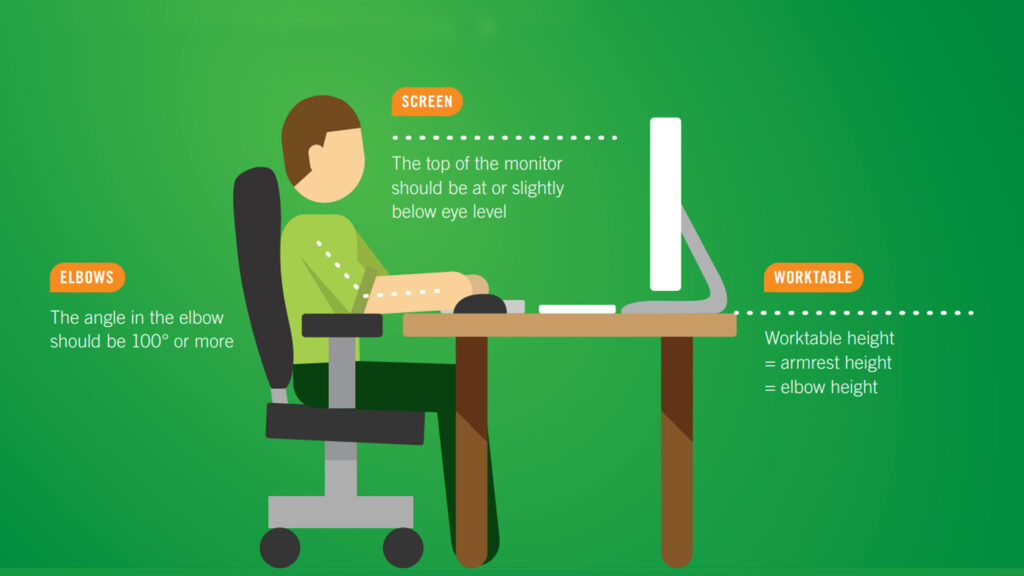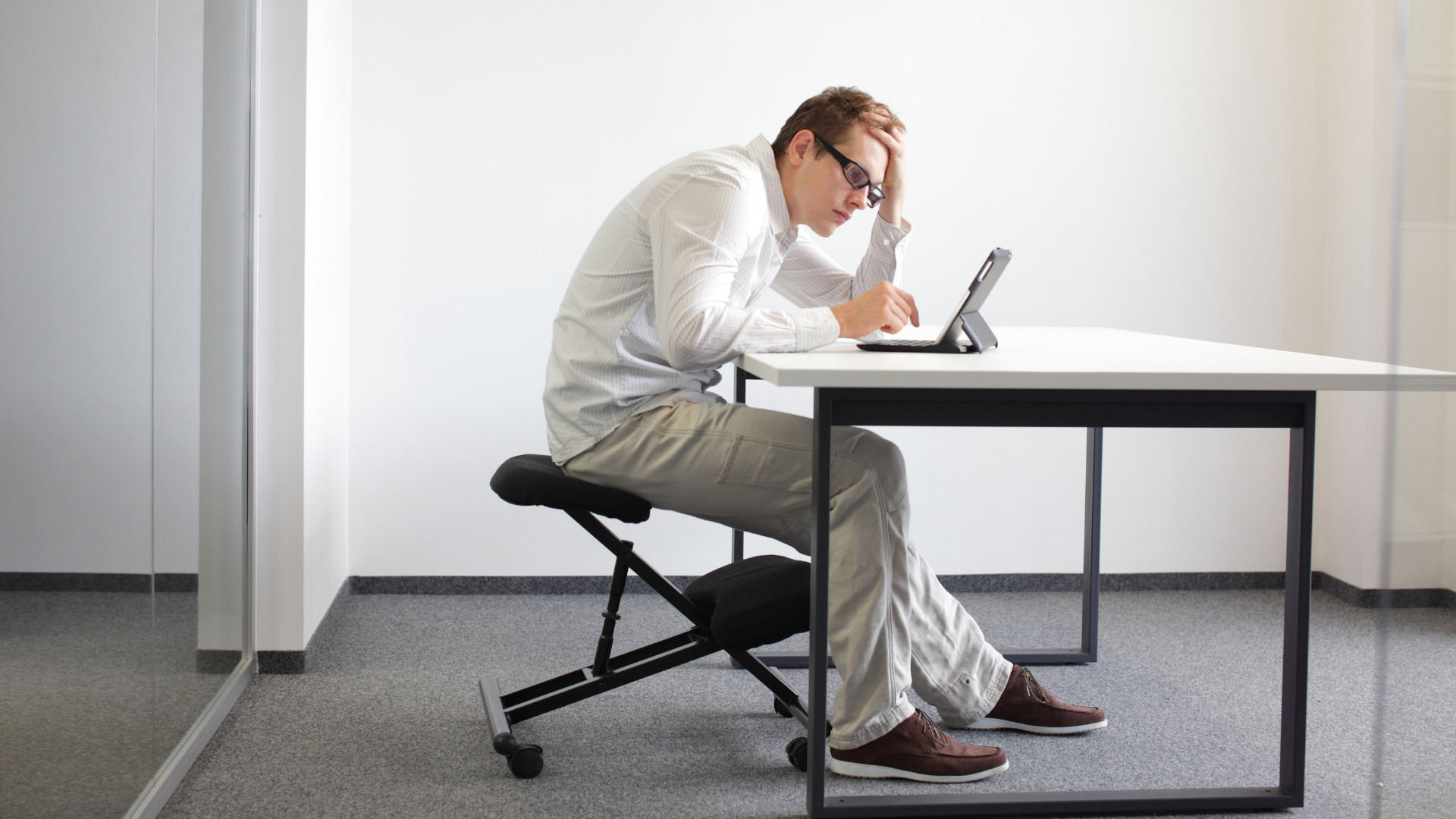Working from home has been the ‘new normal’ for over a year now, and that isn’t likely to change any time soon. So take a moment to check that you’re sitting comfortably at your desk, and make sure you’re spending your days in a productive and healthy way. Together with Mensura, our external partners for health and safety at work, we’ll point you in the direction of the perfect home office in eight simple steps.
1. Work in a specific, separate area
Ideally, you should set up your home office in a separate room. If you don’t have a room to spare, you can ‘fence off’ a separate space at your dining-room table, for instance, with a makeshift partition made from some scrap cardboard. That way, you can create your own private corner to work in, away from your day-to-day life.
2. Ensure a quiet, pleasant workplace
Think about light, air flow and noise. Try to position your desk close to a window (preferably perpendicular to the window rather than facing it). Open your curtains to let the light in. If the sun’s too bright, you can wear sunglasses. Your colleagues will never know!
Be sure to air your workplace regularly. Throw the windows wide open before, during or after working hours, or make sure that the ventilation or filtering system in your office space is well maintained.

Reduce ambient noise as much as possible. Close your door, use earphones or headphones, or put in some earplugs now and then to work in peace.
3. Create a work schedule that suits your own rhythm
It’s important to have structure when working from home. Keep regular hours that suit your rhythm and create a routine. Stick to the structure of a normal working day as much as possible.
If there are children in the house and you don’t want to be disturbed, let them know with clear visual signs. For instance, you can hang a sign on the door handle of your office, or you can use a red bicycle light: switch it on when you don’t want to be disturbed. If you have a partner, take turns working and looking after the children.
Also, be sure to prioritise your most important tasks.
4. Use ergonomic equipment
CHAIR
Make sure you have a comfortable chair to sit in, preferably an ergonomic office chair that’s set up correctly.
Don’t have an office chair at home? Put cushions both on the seat and against the backrest to support your lower back.
TABLE
Ideally, your tabletop should be at elbow height. If you can’t adjust the height of your desk, try putting Duplo bricks or old books under the legs.
If your table is too high, raise your chair a little (e.g. with a cushion) and use a footstool (like a plastic storage container).
LAPTOP
Make sure your laptop is positioned ergonomically. Use a laptop stand or a stack of books to prop it up, or better yet, use an external monitor. Also use an external keyboard and mouse. Ask your manager about the possibility of taking certain office equipment home with you (temporarily).

5. Vary your posture and stand up regularly
Avoid sitting down all day long. Be sure to adopt an ergonomic sitting posture. Take a moment to stand up every half hour. You can even put your laptop on a chair or a stepladder on top of your desk, or on a cabinet, so that you can work standing up.
Phone calls and online meetings are also great opportunities to stand up and change position.
Finally, while it’s nice to get table service, it’s good to get up once in a while to go get a glass of water or a cup of coffee, to use the bathroom, throw something in the bin, and so on.
6. Take healthy breaks
Drink at least 1.5 litres of water a day – that’s six large glasses. Avoid sweets and eat healthy snacks instead, such as fruit, vegetables, nuts, raisins or yoghurt.
Also make sure you get enough exercise. You can go outside for a short walk during your lunch break, go for a run or a bike ride after work, deliberately use the bathroom on another floor, or play an active game with your kids. Even simple stretching exercises can make you feel fitter.

7. Keep safety in mind
Working from home often involves a lot of extra electronic equipment. Be sure to handle this properly to ensure everyone’s safety. Avoid obstacles by fixing computer and other electronic cables to walls or tables with cable ducts. Keep passageways clear and unobstructed, and tidy up your workspace regularly.
Also be mindful of fire safety: install smoke detectors around the house and check the condition of your electrical appliances.
8. Stay in touch with others – and with yourself
Now that you’re not sharing an office, it’s important to keep in touch with your colleagues, even if it’s only online. Start and end the working week together, celebrate successes together, and have virtual coffee breaks.
Keep giving feedback and asking questions. In doing so, don’t be too hard on yourself or others. Keep your manager informed of the tasks and projects you’re working on.

Last but not least, invest in self-care. After all, working from home can blur the lines between work and private life. Go offline for at least a few hours a day, by way of ‘digital detox’. If you’re having a hard day, or week, be sure to seek help from family, friends or other people in your support system. They are there for you.
If you follow all these steps, you’re sure to stay productive and healthy while working from home.
Read more about ergonomics and working from home on Pintra.


